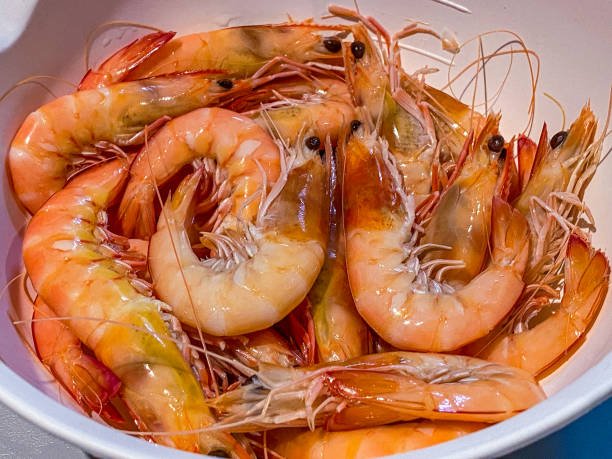Wednesday, 3 December 2025


The animal feed industry has long explored the benefits of yeast and bacteria – either as parts or in their complete form – to enhance animal production. Since the 1960s, probiotics and prebiotics have been primarily used to improve performance, such as live yeast supplementation to boost milk production in dairy cows, or mitigate the effects of many pathogens; for instance, β-glucans stimulate macrophage phagocytic activity or mannan oligosaccharides (MOS) agglutinating type I fimbriae bacteria to prevent their adhesion to intestinal cells. Through this article Serge Corneillie, Ph.D, Senior Management and Business Consultant, Aquaculture/Animal Production, Asia; Ex-CEO ADM Vietnam, Cambodia explores prospects of enhancing shrimp production through pre, pro or postbiotics.
However, over the past decade, the potential of fermented yeast and bacteria, known as postbiotics, has been more fully understood. While prebiotics and probiotics generally have a specific or limited range of functions, postbiotics offer a broad spectrum of benefits that contribute to the overall well-being, immunity, and resilience of animals.
This article aims to provide a comprehensive understanding of the differences between prebiotics, probiotics, and postbiotics. The distinction between postbiotics from yeast and from bacteria is described. Some recent data on the effect of Lactobacillus rhamnosus and L. farciminis postbiotics on the performance, immune parameters and agglutination of Vibrio in white shrimp are described.
Definitions and modes of actions of prebiotics, probiotics, and postbiotics
The term prebiotic was introduced by Gibson and Roberfroid (1995), who defined prebiotics as “a nondigestible food ingredient that beneficially affects the host by selectively stimulating the growth and/or activity of one or a limited number of bacteria in the colon.”
Prebiotics are often parts of or complete cell membranes of non-eukaryotic cells. Examples include fructooligosaccharides (FOS), galactooligosaccharides (GOS), mannan oligosaccharides (MOS), β-glucans, peptidoglucans, inulin, etc. Prebiotics are mostly produced by growing a microorganism in large quantities and then using enzymes to cut off certain parts. There is little fermentation activity in this process.
Probiotics are beneficial microorganisms that support gut health by competing with harmful bacteria, strengthening the gut barrier, and producing antimicrobial compounds. They enhance digestion, immunity, and metabolism, influencing the gut-brain axis and detoxifying harmful substances.
Some of the most commonly used probiotics in animals are Lactobacillus and Bacillus. These bacteria are particularly effective because they produce and release lactic acid in the lumen. Nondissociated lactic acid is a powerful antimicrobial agent that inhibits bacterial growth by penetrating cell membranes, disrupting metabolism, and destabilising bacterial structures.
Unlike its dissociated form, the non-dissociated lactic acid is lipophilic, allowing it to diffuse freely across bacterial membranes, particularly affecting Gram-negative and some Gram-positive bacteria. Once inside, it acidifies the cytoplasm, disrupting enzyme function, depleting energy, and collapsing the proton gradient. This weakens bacterial cells, increasing membrane permeability and making them vulnerable to other antimicrobials.
The effectiveness of lactic acid is enhanced in low-pH environments, making it a crucial natural defence against pathogens (the benefit of using organic acids to lower pH).
Postbiotics are bioactive compounds produced through the fermentation of probiotic bacteria, such as Lactobacillus farciminis and Lactobacillus rhamnosus, or yeast, such as Saccharomyces cerevisiae and L. boulardii. Unlike probiotics, postbiotics do not require live bacteria to be effective, making them more heat stable and easier to incorporate into animal feed, thanks to their resistance to feed production.
The medium cell contains hundreds of metabolites such as short-chain fatty acids (SCFAs), peptides, organic acids, enzymes, bacterial cell wall fragments, and many more, which contribute to gut health, immune modulation, and overall animal performance.
Postbiotics from yeast versus bacteria
Postbiotic metabolites derived from yeast are very different from the metabolites derived from bacteria. This is strongly related to the difference in defence mechanisms of bacteria compared to yeast.
Yeast cells, particularly Saccharomyces cerevisiae, over millions of years, have developed multiple defence mechanisms against bacterial and viral attacks. Their first line of defence is a robust cell wall composed of β-glucans, mannoproteins, and chitin, which acts as a protective barrier.
Additionally, yeast can initiate autophagy or programmed cell death to limit viral spread within the population. To compete with bacteria, yeast deprives them of essential nutrients like sugars and amino acids and alters environmental pH to create unfavourable growth conditions.
Another defence mechanism of yeast is through the production of Heat Shock Proteins (HSPs), which help yeast survive stress from bacterial toxins or viral infections by refolding damaged proteins.
A last defence mechanism is through the production of antioxidant enzymes (like superoxide dismutase and catalase) to neutralise reactive oxygen species (ROS) that might be produced during bacterial attacks.
To read more, click: https://agrospectrumindia.com/e-magazine